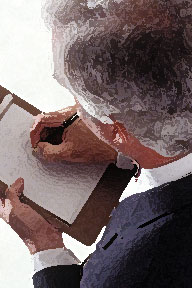
We all know that some Board meetings can run longer then necessary. In most cases, though, Board meetings should take no longer than two hours. In order to conduct an effective meeting, you need to start with a concise meeting agenda.
The meeting agenda should be drafted by the community manager (if one exists) and reviewed by the Board President, since it is the President who will be conducting the meeting. At the top of the agenda should be the date, time and location of the meeting.
Agenda Points
The agenda should begin with a call to order, which is done by the President. Next, the Board should approve the minutes from the last meeting or any other outstanding minutes. Once the minutes are approved, committee reports should be given (management, finance, architectural, communication etc.) for the benefit of all in attendance. After the reports, the business portion of the meeting is typically divided into unfinished business items and new business items. Some communities prefer to break down the business into maintenance categories such as recreational, structures, repair items etc. The individual business items should be listed in order of importance because, as the meeting goes on, there is a tendency to spend less time on each topic.
Open Forum Meetings
In the event of an open Board meeting, it is recommended that an open forum for all interested owners be held after the business portion of the meeting. The reason for placing the open forum toward the end of the agenda is to give owners the opportunity to listen to community issues facing the Board, the content of which may address their specific concern.
Action Item Review
An item that often is added to the end of an agenda is a review of the action items to be addressed before the next meeting. This assures that everyone is clear about the decisions made and who is assigned what task. Finally, the Board should set its next meeting date before adjourning the meeting.
One way to control the length of the Board meeting is to use a timed agenda. To do this, the preparer of the agenda should note the actual start time next to each heading and then provide an estimate of how much time each section of the agenda should take. A timed agenda will allow the Board to re-focus on the agenda if a topic is discussed outside of the scope of the agenda or if participants simply become verbose.
The meeting agenda, along with any other meeting information, should be given to Board members at least one week prior to the meeting date. This allows time to review the meeting material prior to the meeting. A well prepared Board will result in a more efficient and effective meeting.
Related Articles
- How to Start a Neighborhood Association
- HOA Website Can Save Money And Increase Communication
- How Neighborhood Assoc Websites Can Increase Participation
- A Condo Association Website Can Facilitate Communication
- Neighborhood Watch-How to Start One!
- Utilizing a Neighborhood Watch Website
- A Guide to Successful Association Meetings
- Association Basics for Committees
- Attracting Volunteers
- Budget Preparation Tips
- Effective HOA Communications
- Have An Effective and Efficient Meeting Every Time
- Directory of Association Articles
 Print
Print Email
Email







